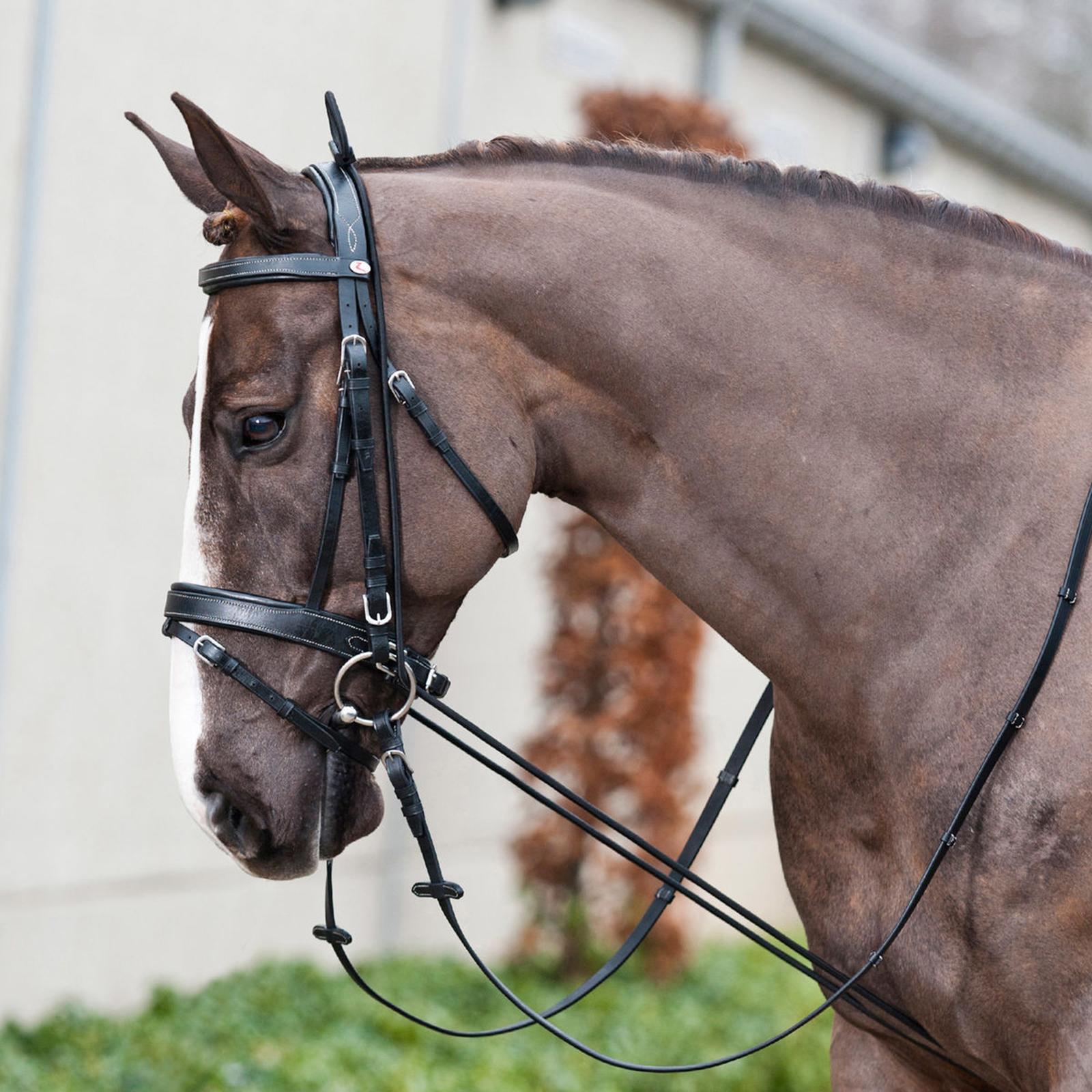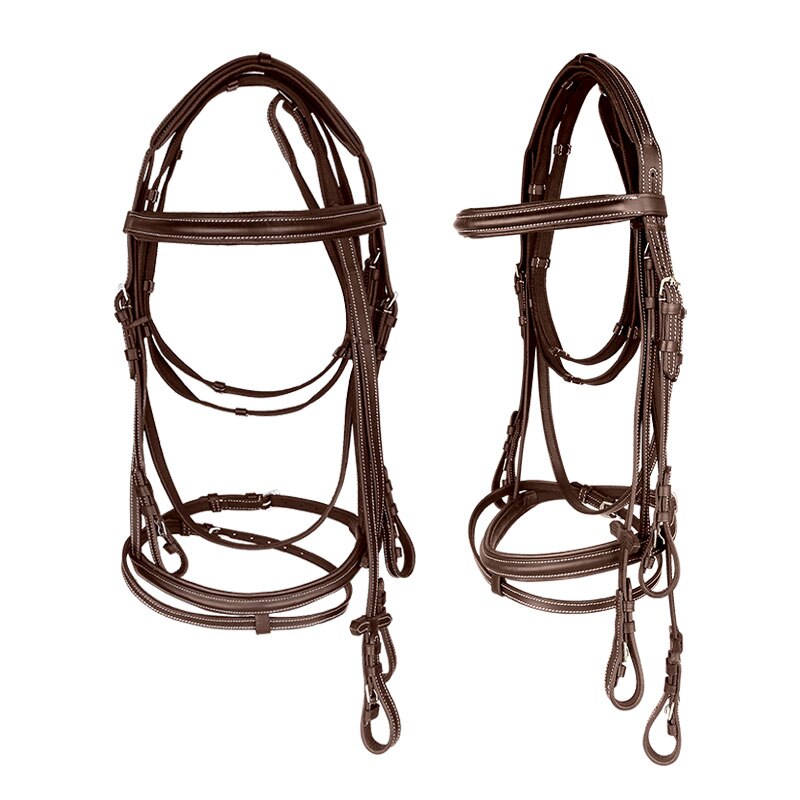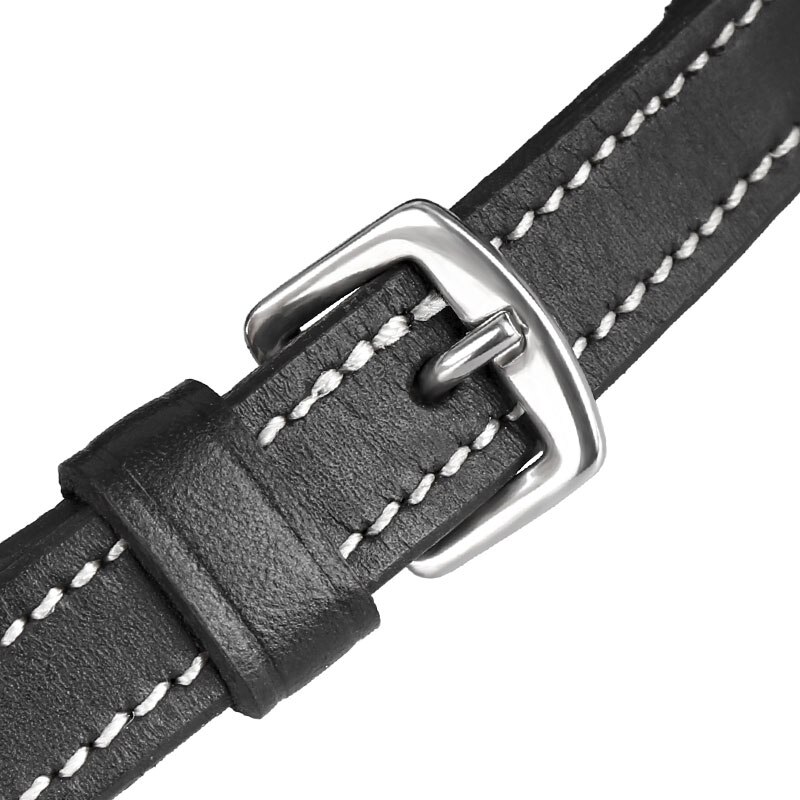
This is not just a functional piece but a vital component in communicating with your horse while ensuring comfort and control. When choosing a Western bridle, factors such as material quality, fit, style, and intended use are crucial for the horse’s well-being and your riding experience.
Material Quality
Opt for high-quality materials that ensure durability, comfort, and functionality. Leather is a popular choice due to its durability and classic appearance. Look for supple, well-treated leather that ages gracefully.
Fit and Comfort
Ensure a proper fit for your horse’s comfort and communication between you and your equine partner. The bridle should sit comfortably without pinching or rubbing. Check measurements and adjustability to achieve a snug yet non-restrictive fit.
Bridle Style
Consider the specific riding discipline or style you’ll be engaging in. Western bridles come in various styles such as headstalls, browbands, and one-ear or two-ear designs. Choose a style that aligns with your riding preferences and the horse’s comfort.
Bit Compatibility
Ensure the bridle is compatible with the bit you intend to use. These can accommodate various types of bits, such as snaffle, curb, or bosal. Verify that the bridle’s design suits the bit you’ll be using for effective communication with your horse.
Rein Attachment
Select a bridle with suitable rein attachments that match your riding style. Some bridles have split reins, while others have romal reins or single reins. The type of reins influences your control and communication with the horse.
Design Details
Pay attention to design details like buckles, stitching, and decorative elements. Quality hardware and craftsmanship enhance both the bridle’s functionality and aesthetics.
Intended Use
Consider the bridle’s purpose. Whether for everyday riding, training, showing, or specific disciplines like reining or barrel racing, choose a bridle designed for your intended use to ensure optimal performance.
Brand Reputation and Reviews
Research reputable brands with positive reviews and a history of producing quality Western bridles. Customer feedback often provides valuable insights into durability, craftsmanship, and functionality.
Maintenance and Care
Follow proper care and maintenance guidelines to ensure the bridle’s longevity. Regular cleaning and conditioning of the leather components keep the bridle in good condition.
Trial and Testing
If possible, try the bridle before purchasing or ensure the seller offers a return policy. This allows you to assess its fit, comfort, and functionality when handling and riding your horse.
Conclusion: The Perfect Partnership Tool
Choosing the perfect Western bridle involves a blend of quality, fit, functionality, and style. It’s an essential tool in fostering communication and comfort between rider and horse during Western riding endeavors.
Explore a range of high-quality Western bridles at Bridle & Halter for a reliable partnership with your horse: Bridle & Halter – Western Bridles.


